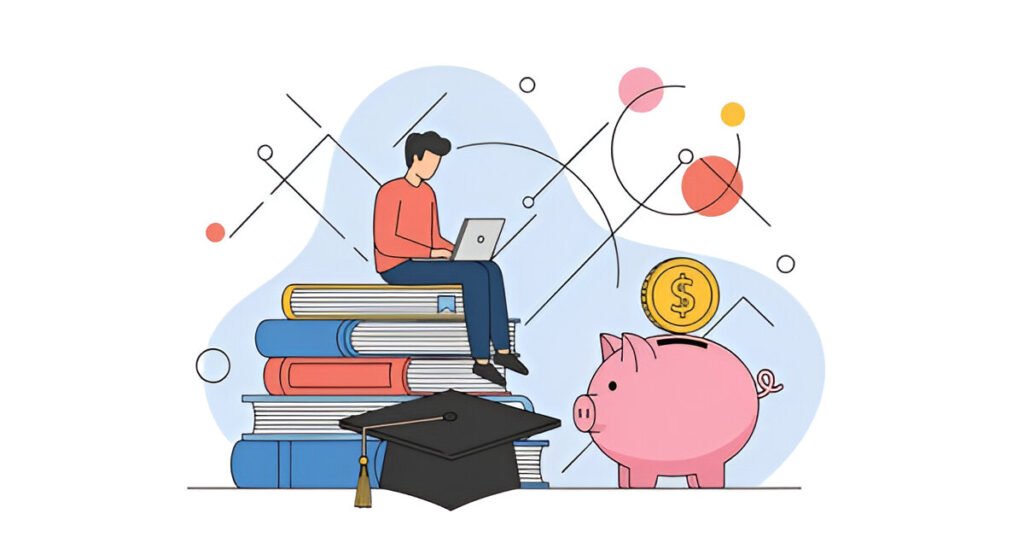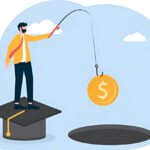Introduction
Imagine you’ve just decided to learn a new skill—maybe graphic design, coding, or digital marketing. You open your laptop, search online, and find thousands of courses, tutorials, and videos. It’s exciting… until you realize you have no idea where to start. You click on one video, then another, but there’s no structure. A week later, you feel stuck and unmotivated.
That’s the challenge many people face when trying to build a personal learning path. Without a clear plan, you end up lost in a sea of free resources. The good news is that you can design your own step-by-step learning journey—at zero cost—if you know how to organize the process.
In this article, I’ll walk you through how to map your own learning path using free online resources, based on my experience, expert advice, and proven strategies that work for students, professionals, and lifelong learners.
Why Building a Personal Learning Path Matters
We live in a time when free learning resources are everywhere. Platforms like Khan Academy, Coursera, edX, YouTube, and MIT OpenCourseWare offer high-quality content at no cost. Yet, research from the Harvard Business Review shows that over 70% of learners fail to complete self-paced online courses.
Why? Because free resources, while valuable, often lack guidance and progression. Without a learning path, you risk jumping from topic to topic without mastering the basics. A structured plan not only keeps you focused but also ensures you build skills in a logical order.
By taking the time to create your own roadmap, you’ll learn faster, remember more, and be more motivated to finish.
My Experience Building a Personal Learning Path
A few years ago, I wanted to learn web development. I started by watching random YouTube tutorials, but I quickly got overwhelmed. I learned bits of HTML and CSS, but I didn’t know how they connected to building a full website.
That’s when I decided to create my own learning plan. I broke my goal into stages: first HTML, then CSS, then JavaScript, then basic frameworks. For each stage, I found free resources that matched my skill level. I set a weekly schedule and tracked my progress.
By following this plan, I built my first complete website in three months—and I understood how every part worked together. That’s when I realized a personal learning path was the key to turning scattered resources into real skills.
Step-by-Step Guide to Building Your Own Learning Path
The first step is to define your ultimate goal. Do you want to get a job, start a business, or just learn for personal growth? Being specific will help you choose the right resources.
Once you have your goal, break it into smaller milestones. For example, if your goal is to learn graphic design, start with basic design principles, then move to software skills like Photoshop or Canva, then tackle advanced topics like branding and typography.
The next step is to choose your resources wisely. Don’t just bookmark every tutorial you find. Instead, select a few high-quality, free resources for each milestone. Many top universities offer free online courses, and YouTube has excellent educational channels if you know where to look.
Finally, create a learning schedule. Decide how many hours you can dedicate each week and stick to it. Treat your learning path like a college syllabus—each topic builds on the one before it.
Comparison Table: Free Online Learning Resources
| Platform | Best For | Format | Certification Option | Strength |
|---|---|---|---|---|
| Khan Academy | Foundational subjects | Video + practice exercises | No | Easy-to-follow lessons |
| Coursera (Free Audit) | University-level courses | Video lectures + quizzes | Paid | Structured, high-quality content |
| edX (Free Audit) | Academic and professional skills | Video + assignments | Paid | Harvard/MIT-backed courses |
| MIT OpenCourseWare | Advanced, technical learning | Full course materials | No | Prestigious, in-depth learning |
| YouTube (Educational Channels) | Practical, skill-based learning | Video tutorials | No | Wide variety of real-world examples |
| Skillshare Free Trial | Creative and practical skills | Video lessons | No | Hands-on projects |
| OpenLearn (Open University) | Academic and life skills | Video + reading | No | Organized by topic and difficulty |
Expert Advice on Building Your Learning Path
According to Dr. Richard E. Clark of the University of Southern California, self-directed learners perform best when they “sequence learning activities from simple to complex, building a foundation before advancing.” This means you shouldn’t skip beginner material even if it feels slow—those basics will make advanced topics easier later.
The World Economic Forum predicts that 50% of all employees will need reskilling by 2025. This highlights the importance of learning continuously, not just once. Your personal learning path should be flexible so you can adapt to new trends and skills.
Forbes contributor Michael Simmons advises creating a “learning loop,” where you learn, apply, get feedback, and repeat. This approach ensures you’re not just consuming information but using it to build real-world competence.
Case Example: Building a Learning Path for Digital Marketing
Let’s say your goal is to become a digital marketing specialist without paying for expensive courses. You could structure your path like this:
Stage 1: Understanding marketing basics. Use Google Digital Garage’s free fundamentals course.
Stage 2: Learning SEO and analytics. Watch beginner SEO playlists on YouTube from trusted channels like Ahrefs.
Stage 3: Mastering social media marketing. Follow free courses from Meta Blueprint and HubSpot Academy.
Stage 4: Applying your skills. Create a mock marketing campaign for a fictional brand.
Stage 5: Expanding to advanced strategies. Audit free Coursera courses on content marketing and email campaigns.
By following this sequence, you avoid the trap of trying to learn advanced ad targeting before understanding the core principles of marketing.
Common Mistakes to Avoid When Building Your Path
One of the biggest mistakes is overloading yourself with too many resources. It’s tempting to collect dozens of links, but that just creates decision fatigue. Choose fewer, higher-quality sources and stick with them.
Another mistake is skipping practice. Watching videos or reading articles without applying the knowledge is like learning to swim by reading a book—you won’t truly learn until you get in the water.
Finally, avoid comparing your progress to others. Your learning path is personal, and moving at your own pace is better than rushing to keep up with someone else.
Final Thoughts: Why a Personal Learning Path Is Worth It
When you build a personal learning path using free resources, you take control of your education. You’re no longer relying on expensive courses or random tutorials. Instead, you have a roadmap that keeps you on track and motivated.
The best part? This skill—structuring your own learning—is one you can use for life. Whether you want to pick up a new hobby, switch careers, or stay competitive in your field, you’ll know exactly how to create a learning journey that works for you.
Start small, stay consistent, and remember that progress is better than perfection. In a world where knowledge is free and abundant, the ability to organize that knowledge is your greatest advantage.
FAQs
1. How much time should I spend on my personal learning path each week?
It depends on your schedule, but even 3–5 hours weekly can lead to significant progress if you stay consistent.
2. Can I really learn job-ready skills for free?
Yes, many people have built careers using only free resources, but it requires discipline, structured learning, and practice.
3. Should I pay for a certificate?
Certificates can help if you want to show proof of learning to employers, but they aren’t necessary for gaining skills.



